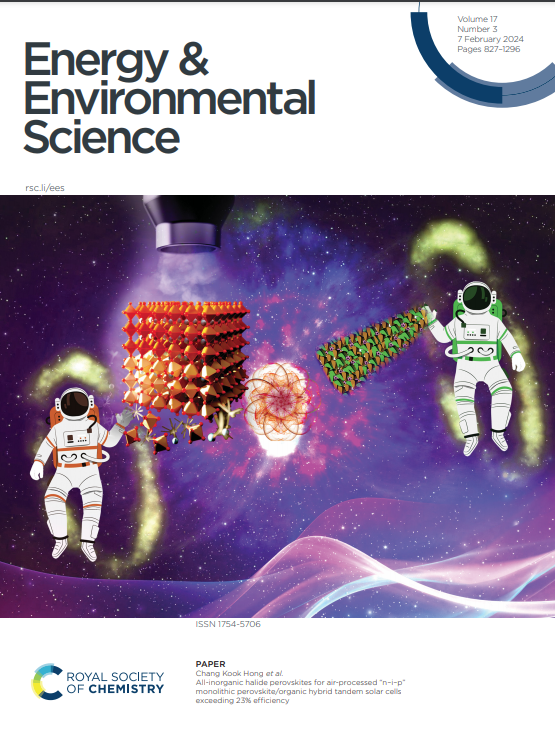Hot Carrier Organic Solar Cells
IF 32.4
1区 材料科学
Q1 CHEMISTRY, MULTIDISCIPLINARY
引用次数: 0
Abstract
Hot-carrier solar cells use the photon excess energy, that is, the energy exceeding the absorber bandgap, to do additional work. These devices have the potential to beat the upper limit for the photovoltaic power conversion efficiency set by near-equilibrium thermodynamics. However, since their conceptual inception in 1982, no experimental realization that works under normal operational conditions has been demonstrated, mostly due to the fast thermalization of photo-generated charges in typical semiconductor materials. Here, we use noise spectroscopy in combination with numerical modelling to show that common bulk heterojunction organic solar cells actually work as hot-carrier devices. Due to static energetic disorder, thermalization of photo-generated electrons and holes in the global density of states is slow compared to the charge carrier lifetime, leading to thermal populations of localized charge carriers that have an electronic temperature exceeding the lattice temperature. Since charge extraction takes place in a high-lying, narrow energy window around the transport energy, the latter takes the role of an energy filter. For common disorder values, this leads to enhancements in open circuit voltage of up to ∼0.2 V. We show that this enhancement can be understood as a thermovoltage that is proportional to the temperature difference between the lattice and the charge populations and that comes on top of the near-equilibrium quasi-Fermi level splitting.热载流有机太阳能电池
热载流子太阳能电池利用光子的过剩能量,即超出吸收器带隙的能量来做额外的功。这些装置有可能超越近平衡热力学所设定的光伏功率转换效率上限。然而,自 1982 年提出概念以来,还没有在正常工作条件下工作的实验实现,这主要是由于在典型的半导体材料中,光产生的电荷会快速热化。在这里,我们利用噪声光谱与数值建模相结合,证明普通的体异质结有机太阳能电池实际上是作为热载流子器件工作的。由于静态能量无序,与电荷载流子寿命相比,全局态密度中光生电子和空穴的热化速度较慢,从而导致局部电荷载流子的热群体,其电子温度超过晶格温度。由于电荷萃取发生在围绕传输能的高位窄能窗口中,因此传输能起到了能量过滤器的作用。我们的研究表明,这种增强可以理解为一种热电压,它与晶格和电荷群之间的温差成正比,而且是在近平衡准费米级分裂的基础上产生的。
本文章由计算机程序翻译,如有差异,请以英文原文为准。
求助全文
约1分钟内获得全文
求助全文
来源期刊

Energy & Environmental Science
化学-工程:化工
CiteScore
50.50
自引率
2.20%
发文量
349
审稿时长
2.2 months
期刊介绍:
Energy & Environmental Science, a peer-reviewed scientific journal, publishes original research and review articles covering interdisciplinary topics in the (bio)chemical and (bio)physical sciences, as well as chemical engineering disciplines. Published monthly by the Royal Society of Chemistry (RSC), a not-for-profit publisher, Energy & Environmental Science is recognized as a leading journal. It boasts an impressive impact factor of 8.500 as of 2009, ranking 8th among 140 journals in the category "Chemistry, Multidisciplinary," second among 71 journals in "Energy & Fuels," second among 128 journals in "Engineering, Chemical," and first among 181 scientific journals in "Environmental Sciences."
Energy & Environmental Science publishes various types of articles, including Research Papers (original scientific work), Review Articles, Perspectives, and Minireviews (feature review-type articles of broad interest), Communications (original scientific work of an urgent nature), Opinions (personal, often speculative viewpoints or hypotheses on current topics), and Analysis Articles (in-depth examination of energy-related issues).
 求助内容:
求助内容: 应助结果提醒方式:
应助结果提醒方式:


